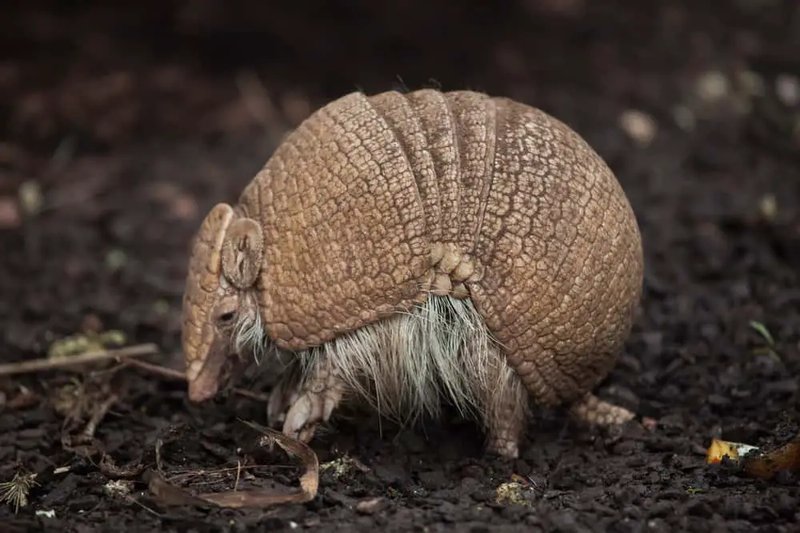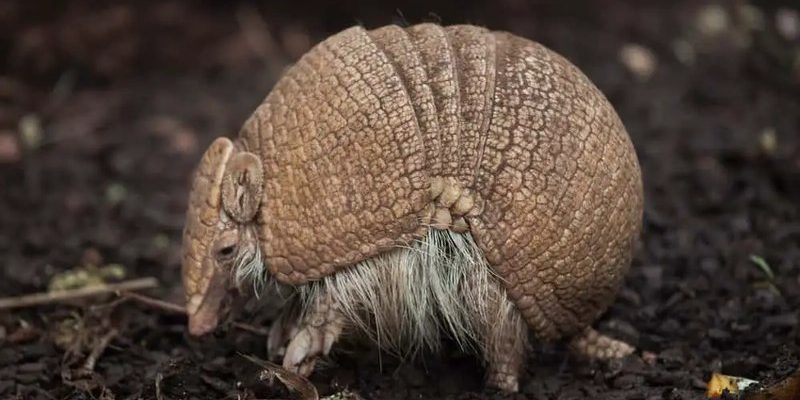
So, let’s dive in. We’ll explore ten animals that resemble the humble armadillo and highlight their key characteristics. This way, you can impress your friends with your newfound knowledge. Whether you’re a wildlife enthusiast or simply curious about nature, this guide will help you tell these creatures apart effortlessly.
1. Tapir
Tapirs are large, herbivorous mammals similar in some ways to armadillos, but they’ve got their own unique charm. They have a pig-like snout and a stout body, covered in short hair rather than a shell. You might think of them as a combination of a horse and a rhinoceros—but soft and rounded.
Here’s the thing: tapirs are much bigger than armadillos, weighing between 500 to 900 pounds. Unlike the armored exterior of an armadillo, tapirs rely more on their size and agility to navigate through dense forests. They are mostly found in Central and South America and have a knack for swimming. If you ever spot one, look for its long, prehensile snout—kind of like a built-in snorkel!
2. Pangolin
If you’ve never heard of a pangolin, you’re missing out on one of the world’s most unique animals. Often described as “scaly anteaters,” these creatures are covered in hard, keratin scales that they can roll into a ball when threatened, similar to an armadillo.
However, unlike armadillos, pangolins do not have a bony shell; their scales give them protection. They are also much smaller, weighing only about 10 to 40 pounds. Pangolins primarily eat ants and termites, using their long tongues to probe into nests. Imagine trying to eat a bowl of soup with a straw—that’s how they get their food!
3. Nine-Banded Armadillo
Of course, we can’t talk about animals like the armadillo without mentioning its own kind! The nine-banded armadillo is the most common species found in North America. They’re known for the nine distinct bands across their backs, which is a pretty neat feature.
Color-wise, these guys have a grayish-brown hue, and their shells are quite hard, serving as a protective barrier against predators. Unlike some of their relatives, they can’t curl up into a complete ball, which makes them a bit more vulnerable. If you see one scurrying around at dusk, you might catch it foraging for insects, worms, and even small fruits!
4. Hedgehog
Hedgehogs may not seem similar to armadillos at first glance, but they share a few key traits. Both use their outer coverings for protection: armadillos have tough shells, while hedgehogs sport sharp spines. If you’ve ever seen a hedgehog curled up, it’s similar to how an armadillo looks when it feels threatened.
Hedgehogs are much smaller, usually topping out around 1 to 2 feet long. They’re found in Europe, Asia, and Africa, often in gardens or parks. Instead of digging for insects like an armadillo, hedgehogs are nocturnal foragers, so you might spot one rummaging through leaves late at night.
5. Opossums
Opossums are often referred to as “nature’s cleanup crew.” They have a rather unique look with their long tails and pointed snouts. Though they don’t have a protective shell like the armadillo, their defense mechanism is quite fascinating—they play dead when threatened, often giving the impression of being injured.
Unlike armadillos, opossums are marsupials, meaning they carry and nurse their young in pouches. You might find them scuttling around at night, helping themselves to leftover fruits or scavenging on roadways. If you hear rustling in your trash can at night, it might just be an opossum on a late-night snack run!
6. Anteater
Anteaters and armadillos share a common habitat and diet, primarily consisting of insects. They have long snouts and tongues designed for snatching up ants and termites, which is a clear difference from the armadillo’s more general diet.
Although they do not have the hard shell of an armadillo, anteaters possess coarse fur and a long, bushy tail. They come in several species, including the giant anteater, which can grow up to 7 feet long, including its tail. Think of them as the elegant cousins of the armadillo—long and sleek, perfect for running through the underbrush.
7. Tortoise
Tortoises are another animal that might come to mind when you think of armadillos. Both have hard exteriors, but tortoises are reptiles with a shell that protects their soft bodies. They are much slower and often live much longer than armadillos, sometimes up to 100 years!
One of the biggest differences is their lifestyle. Tortoises tend to prefer dry, terrestrial environments, while armadillos often roam grassy areas and forests. A tortoise’s shell is also more dome-shaped compared to the flatter armor of an armadillo. If you see an armadillo moving swiftly across the ground, just remember that the tortoise is quite content to take it slow!
8. Glyptodon (Extinct)
Let’s take a step back in time with the glyptodon, an extinct relative of the armadillo. These ancient creatures roamed the earth about 2 million years ago and were about the size of a small car! Glyptodons had a heavy shell similar to modern armadillos, but theirs was thicker and much more massive.
They likely lived in South America and were herbivores, munching on plants and grasses. It’s intriguing to think about how these prehistoric beasts might have interacted with their environment, much like today’s armadillos do. If you want a visual, picture an armadillo blown up to the size of a golf cart—impressive, right?
9. Porcupine
Porcupines are often stereotyped as dangerous due to their quills, which are meant for defense. While they don’t have a shell like the armadillo, their body is covered in sharp spikes that deter most predators.
Both armadillos and porcupines can be found in a range of habitats, but porcupines are largely arboreal, spending much of their time in trees. They also enjoy a diet of leaves, twigs, and fruits, similar to armadillos. If you encounter a porcupine, just remember: unlike the armadillo, they won’t roll into a ball. Instead, they’ll stick up for themselves using those impressive quills!
10. Coati
Last but not least, let’s talk about the coati. These lively animals are part of the raccoon family and share habitats with armadillos. They have long snouts, agile bodies, and are usually seen in groups.
Coatis are social, curious creatures that spend a lot of time climbing trees and searching for food. They have a different look compared to armadillos, with softer fur and no armored protection. While armadillos are mostly solitary and ground-dwelling, coatis thrive in social groups. Seeing a coati might feel like catching a glimpse of a playful raccoon in the wild!
In conclusion, there are a variety of animals that share similarities with the armadillo. From the quirky pangolin to the robust tapir, each has its unique characteristics that set them apart. Understanding these differences not only adds to your wildlife knowledge but can spark curiosity for all creatures great and small. Next time you spot an armadillo or one of its lookalikes, you’ll be armed with fun facts to share!

